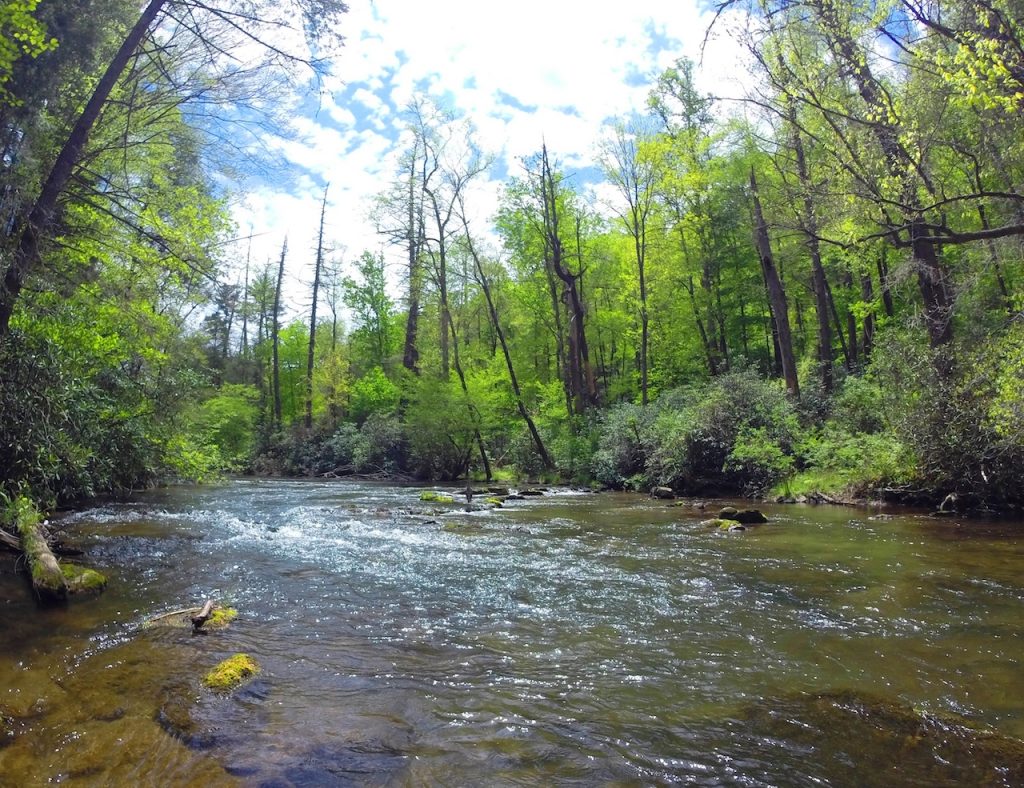
If you’ve ever fished with me or have read more than two articles in this newsletter, you undoubtedly know how much I emphasize the importance of water temperature when fishing for wild trout. Often in the summer, it can be too warm in many places, causing trout to be lethargic or even migrate to cooler water. In winter, it can be too cold, causing changes in metabolism and a shut down in feeding. In early spring, you’re often fishing right on the edge of good water temperatures. Throughout the day, you may encounter totally different feeding behaviors – from hour to hour and from pool to pool.
Though it’s not quite this exact, 50-degrees is kind of the magic number we’re looking for. When we see water temperatures at or above 50-degrees for the better part of the day, we typically start to see actively feeding fish. This is due to not only the change in metabolism, but also the increase in bug activity. It can be deceiving, though, when we start to have these warmer days but the overnight temperatures are still getting pretty cold. It may be late morning or early afternoon before the water has had time to warm to a “stimulating” temperature.
So forget what your granddad told you about getting to the water at dawn. That’s great advice during the heat of summer, but in early spring, it will usually only give you a lot of casting practice until things heat up later in the day. While there are, of course, variables based mostly on weather, your best fishing this time of year will probably be between 11:00 a.m. and 5:00 p.m. Sleep in, eat a late breakfast, get to the water around 10 so you have some time to gear up, and enjoy your afternoon.
This is also not the best time of year for making that 7-mile hike to a high elevation brook trout stream. With very rare exceptions, your water temperatures are going to be considerably cooler at high elevations. This is the time to focus on lower and mid elevation streams.

Now that you’re at the right place at the right time, there are other things you want to look for. While slower pools often fish poorly later in the year, they can be great places to fish in early spring, mostly because of the abundance of food. The best hatches, at least in the Smokies, occur in the spring and you can target a lot of feeding fish in these pools. Dry fly fishing can be at its best on early spring afternoons and it’s a great opportunity to find a larger brown trout feeding on the surface. Even if there is not an active hatch, there are plenty of bugs preparing to hatch. Drifting nymphs along the bottom, particularly near the heads of these pools can be very productive.
The other advantage to larger pools this time of year is they typically have less tree canopy and the water gets more direct sunlight. Seeking direct sunlight is counterintuitive to many fishermen, but in the early season, it often means warmer water. And even if the sunlight isn’t significantly warming the water, it is likely stimulating more bug activity, which will in turn, stimulate fish. Still, bright sunlight can have a negative impact on fish and their willingness to feed, so I try to seek out and pay particular attention to the “sweet spots” – good holding water that has a nice mix of sun and shadows.
Finally, when choosing days to fish this time of year, really try to pay attention to the overnight lows more than the daytime highs. Warmer overnights will better maintain those water temperatures we’re looking for. And don’t be afraid to get wet. A warm rain can raise water temperatures and turn fish on quicker than anything this time of year!
